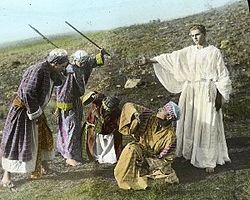
Mormon cinema usually refers to films with themes relevant to members of the Church of Jesus Christ of Latter-day Saints (LDS Church). The term has also been used to refer to films that do not necessarily reflect Mormon themes but have been made by Mormon filmmakers. Films within the realm of Mormon cinema may be distinguished from institutional films produced by the LDS Church, such as Legacy and Testaments, which are made for instructional or proselyting purposes and are non-commercial. Mormon cinema is produced mainly for the purposes of entertainment and potential financial success.
Though Latter-day Saints have been involved in the film industry in various ways since the early 20th century, independent Mormon cinema is a relatively new phenomenon. Many scholars and filmmakers accredit Richard Dutcher's 2000 film God's Army with ushering in the modern Mormon cinema movement. Following the commercial success of Dutcher's film, Mormon producers and directors began to market distinctly Mormon movies to LDS audiences, especially those living in the Mormon Corridor. This began with a wave of Mormon comedy movies, such as The Singles Ward (2002) and The R.M. (2003), that focused on the more comedic aspects of the culture surrounding the religion. Films within the Mormon cinema subgenre typically rely heavily on LDS themes and are marketed mostly toward Latter-day Saints, though there has been an effort to "cross over" into more general topics and appeal to a wider audience. Generally, Latter-day Saints produce and direct the films. Over the years, Mormon cinema has explored a variety of production methods: widespread commercial release, single-theatre release, and direct-to-DVD release.[1]
Production of Mormon films has slowed since the early 2000s, but those in the niche industry continue to release movies covering distinctly LDS topics, such as Mormon missionaries and LDS Church history. Theological elements, such as man's ability to be close to God, remain present in Mormon films.[1]
- ^ a b Anderson, Sky (2012). A Reason to Believe: A Rhetorical Analysis of Mormon Missionary Films (PDF) (M.A. thesis). Colorado State University.
© MMXXIII Rich X Search. We shall prevail. All rights reserved. Rich X Search
